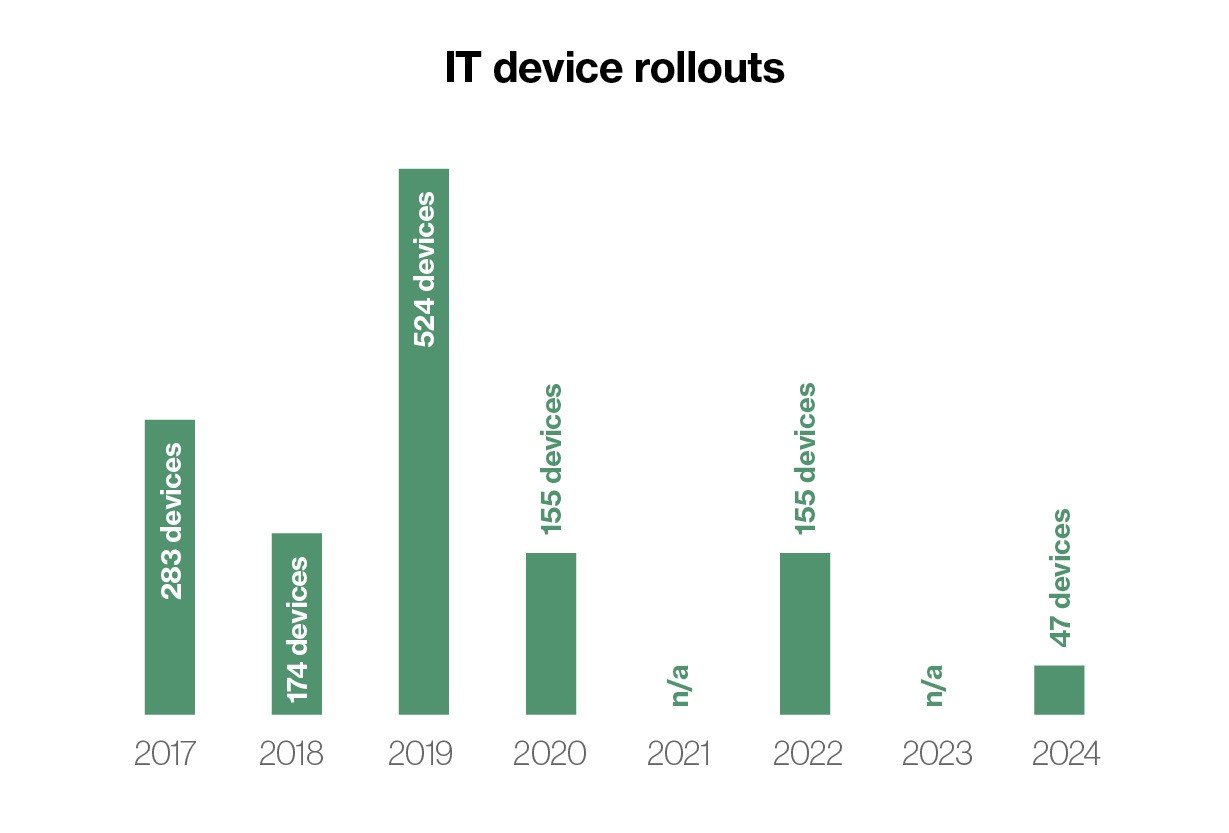Sustainable IT
Sustainability is a key consideration within our IT department. Our primary objective is to maximise the service life and compatibility of our devices in order to avoid having to replace equipment unnecessarily. This applies not only to PCs and notebooks, but also to peripheral equipment such as printers, monitors, docking stations, handheld scanners, mice and keyboards.
Prior to 2020, computers were replaced in a four-year cycle and mainly focused on “all-in-one” devices and notebooks with an additional monitor. The chart below displays data with regard to company-wide rollouts in recent years:

By switching to fast SSDs instead of slow hard drives, the lifespan of our devices has been significantly enhanced. The performance of the components remains almost unchanged over the years, with the result that since 2020 we have been able to extend the lifespan of our devices to five years and then later to six years. This year we are only replacing devices that are no longer capable of running Windows 11. This has enabled us to make savings in the last financial year as we avoid waste and recycling costs, without having to compromise in terms of performance.
In the area of “all-in-one” stand-alone devices, there has been a sharp reduction in the number of devices used, as mobile working has become more widespread since 2020. Monitors can continue to be used for decades, as the technology hardly changes and the display options for stand-alone PCs and notebooks usually remain the same or can be supplemented with adapters. Increasingly, we are using mini PCs that can be replaced separately from the monitors, which again helps to avoid waste in terms of display technology. This saves the company around EUR 300 per device, which is equivalent to an entire monitor that does not have to be disposed of.
At present, there are around 180 notebooks that are already in their sixth year of use.